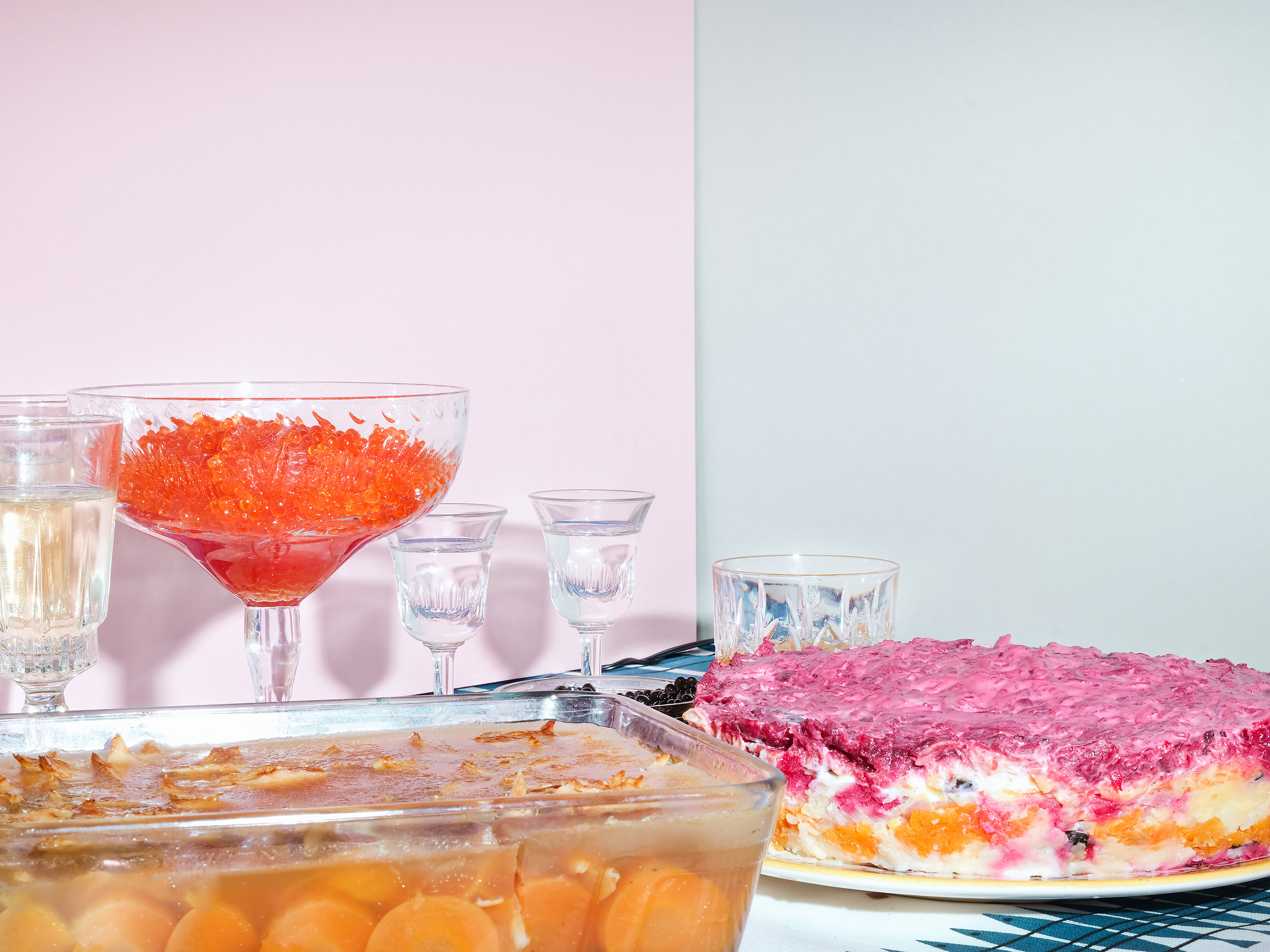From Slav Identity, 2021. All images © Varvara Uhlik
Now studying in London, the Ukrainian One to Watch Varvara Uhlik uses food and animation to explore Slavic identity
Before turning to photography full time, Varvara Uhlik studied for a BA in arts and media management at Jagiellonian University, Kraków, a programme she chose because she thought art-making “was something available only to the chosen ones”. The course spanned the history of art, cinema, theatre and music, and though valuable, through studying Uhlik “began to understand that I actually wanted to be on the other side of the art industry – to create”. A second degree – in photography at The Hague’s Royal Academy of Art – was where her artistic practice took root, leading her to London’s Slade School of Fine Art, where she is now pursuing an MA.
Uhlik incorporates this mixed-media education in her practice. In An Incident, a 2022 video starring emotionally turbulent Barbie dolls, an innocent, picture-perfect opening sequence gives way to dolls experiencing loneliness and striving for meaningful connection. Uhlik’s text explains how humans’ anxiety to be seen as strong and confident “divides a person into an inner and outer character: the one that is feeling and experiencing things truly and the one that is showing to others how they are feeling and thinking”. Psychology and psychoanalysis are important influences in her work.

“Only a couple of years ago I realised that my upbringing was still deeply embedded in Soviet values”
An apparently playful scene hints at a deeper existential inquiry, animated by plastic characters that perhaps best symbolise modern society’s unrealistic social and visual standards. “The moving image manages to evoke a mix of feelings and emotions in me like no other medium does,” Uhlik says. An accompanying publication shows dating app profiles for each of the dolls. “Single since a week,” one reads.
An earlier series, Slav Gaze (2021), taps into a similar interest in the performance of identity and online appearances. The overlit close-ups of roast potatoes, croissants, pickles and salami look to correct the stereotype of Slavic culture as bland – though Uhlik describes her childhood surroundings as “grim” – while also parodying what the artist sees as “a tendency in the Slavic countries, those that are post-Soviet in particular, to post pictures of luxurious meals” and other material possessions.
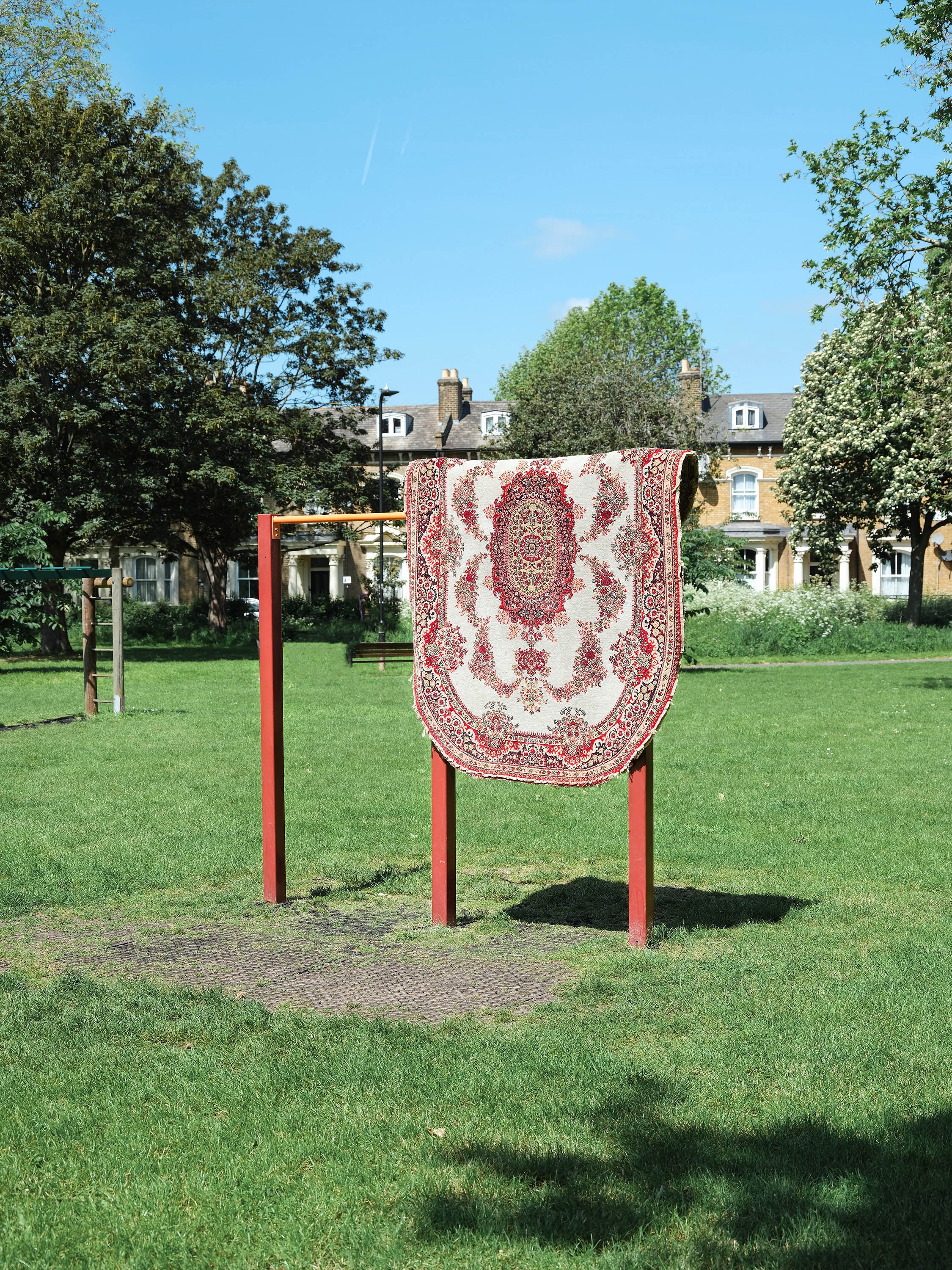
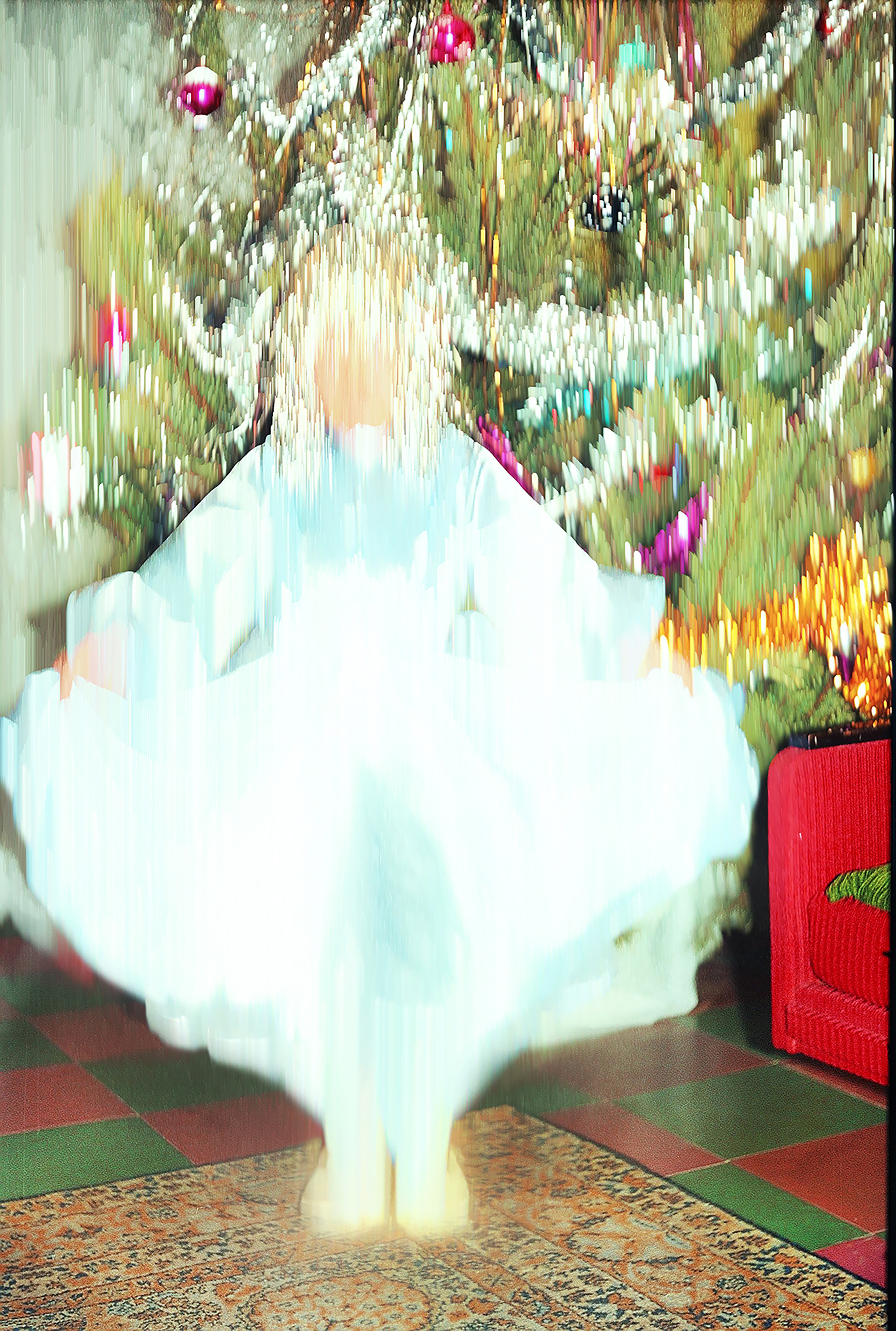

Uhlik grew up in Dnipro in Ukraine, a city developed in the late-18th century by the Russian Empire. “Only a couple of years ago I realised that my upbringing was still deeply embedded in Soviet values,” she reflects. “Especially during school times, where we were taught not to stand out and to always be obedient – I’m unlearning these patterns to this day.” Since Russia’s full-scale invasion of Ukraine, Uhlik has not been able to return home, a separation which has informed her recent work. “I find eastern and western Europe to be significantly different in culture and identity,” she says. “There is generational trauma which many of the ex-communist states are still grappling with.”
Sonechko, Yak Ty? (Sunshine, How Are You?’) (2023) is where this history is most acutely felt, using Uhlik’s childhood photographs to probe memory and the truthfulness of archives. She employs a highly saturated palette in pictures of New Year’s Day celebrations, the most significant Ukrainian holiday – and where Soviet tradition’s long shadow is visible. A picture of raw dumplings appears almost muscular on a pink table cloth; another shot shows red caviar in a crystal glass coupe. “I have a picture in front of the New Year’s yolka tree from almost every annual celebration since I was born,” Uhlik explains. “Filled with hope, we would always say, ‘To a new year, to new happiness!’”
The war in Ukraine has tarnished these memories, creating an emphasis on preservation but also the fragility of place- based loyalties. To represent this confusion, Uhlik is increasingly turning to digital manipulation, blurring her archival images or inserting new forms such as playground equipment to reconstruct distorted memories as Ukraine’s future hangs in the balance. “I’ve had to come to terms with myself that I may never be able to see those places ever again,” Uhlik says, “revisiting only what remains of them in my memories.”
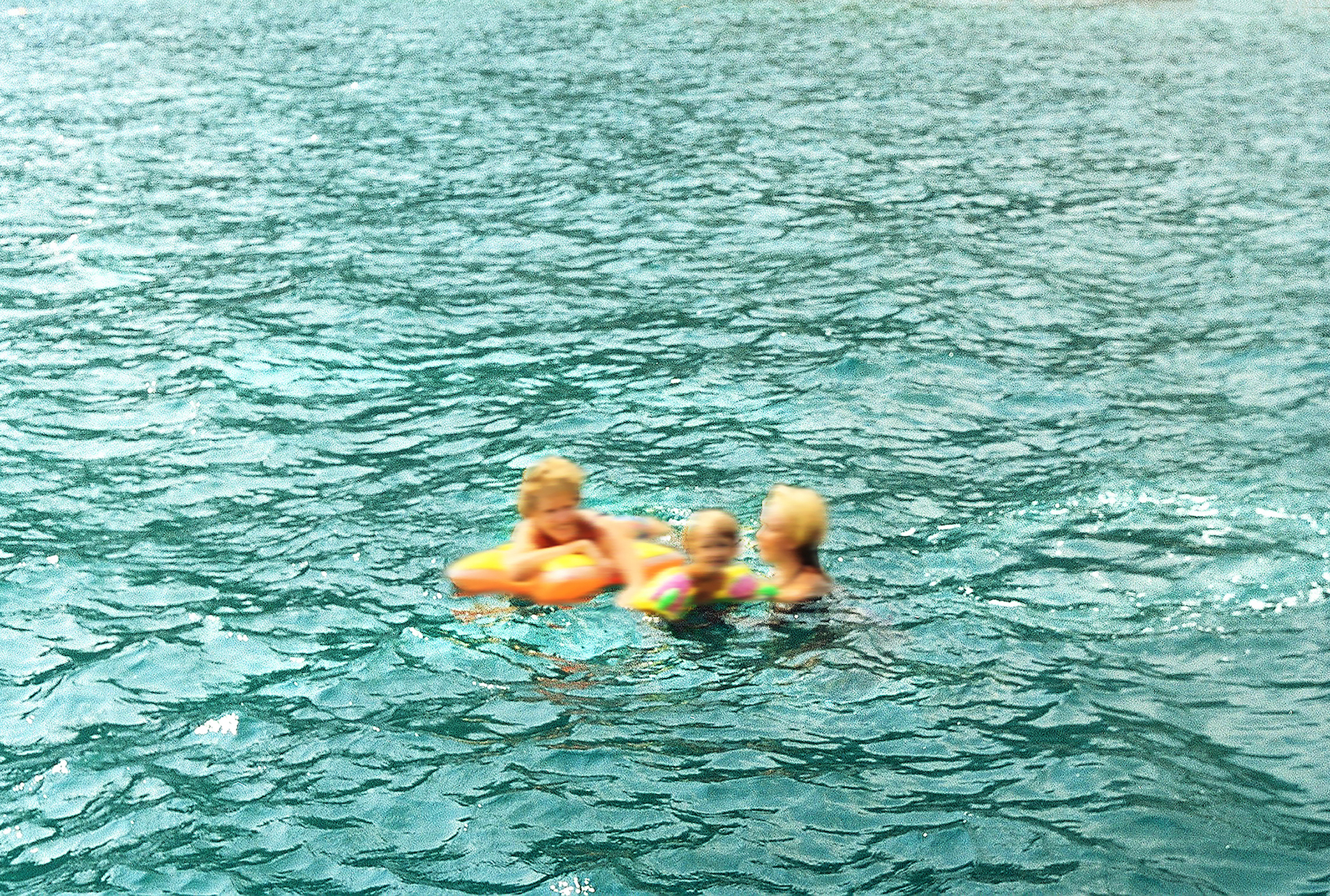
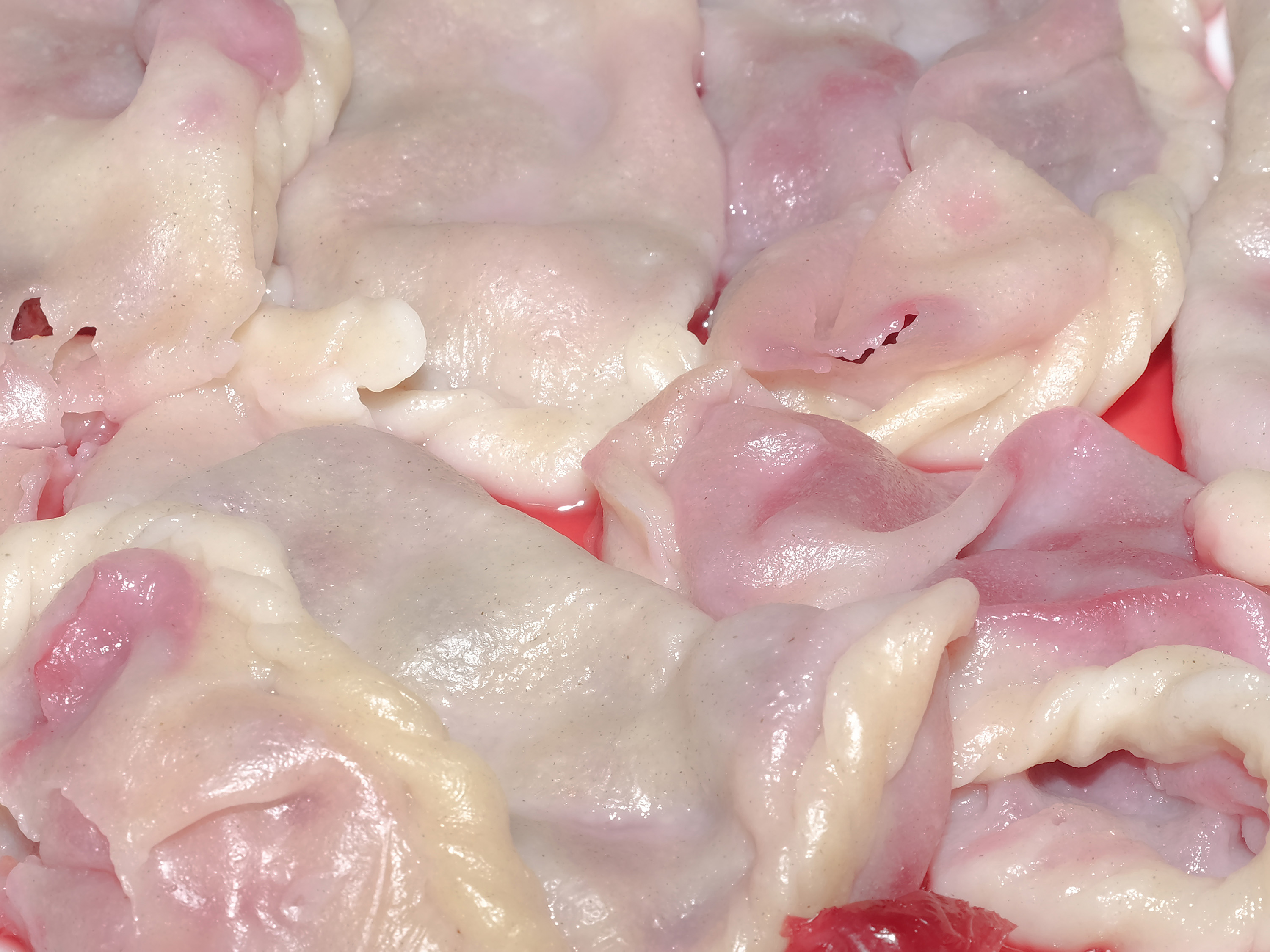
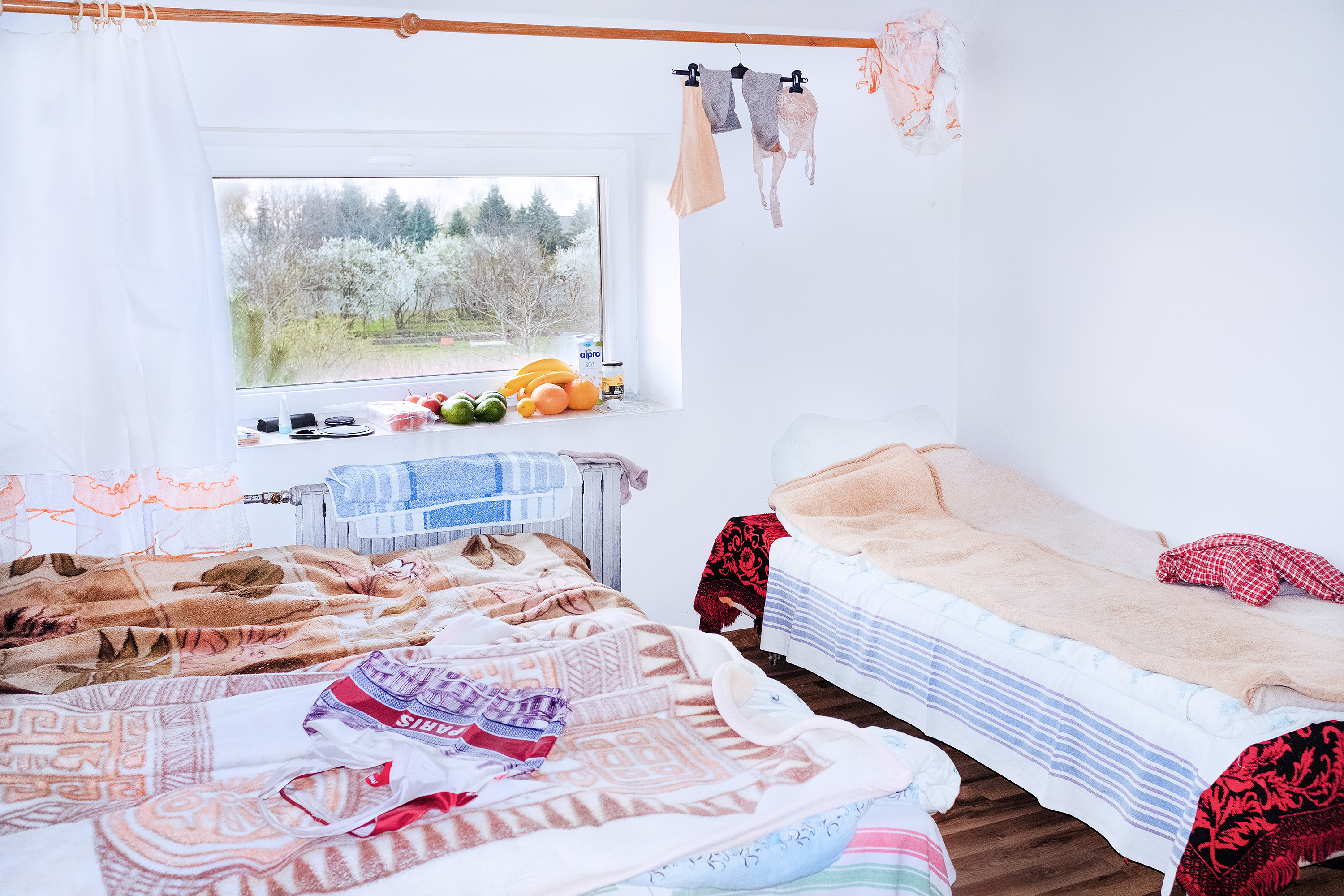
“Varvara Uhlik’s curiosity to express herself with different media is a continuous journey in her recent works,” says Erik Kessels, who recommended Uhlik as One to Watch. “She crosses between photography, film, performance and sculpture.
“Uhlik is from a generation that came of age in the post- Soviet milieu in Ukraine. Witnessing the war in Donbas and the Russian occupation of Crimea has profoundly shaped her identity. Her only access to Ukraine since then has mainly been through family archives and Google Street View. By using photography/post-photography she’s able to transport herself back; back to her past and hopefully into a more stable future. Her talent as an artist certainly won’t get in the way of this.”

